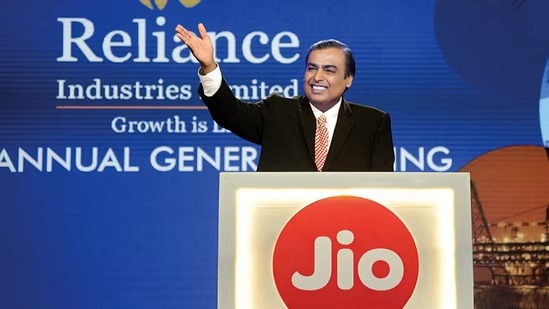T.K. Joseph, J.@mdashThe appellant is defendant 2 in the trial court. He has filed the appeal from the decree of the trial court declaring the plaintiff''s title to the property described in the plaint schedule, and directing, recovery of the same from defendant 2 with mesne profits.
2. The plaintiff''s case was that this property, Sy. No. 329/4 belonged to one Subbiah Mudaliar who had mortgaged it to one Sappani Ammal. The equity of redemption was purchased by the plaintiff under Ex. D dated 23-4-1117. The mortgage right was assigned by Sappani Ammal in favour of defendant 1 under Ex. C dated 21-5-1118. The plaintiff alleged that defendant 3 had paid the mortgage amount to defendant 1 and had obtained a release Ex. C(1) on 25-10-1118.
The plaintiff purchased the property from defendant 3 under Ex. O dated 24-11-1121. Defendant 2 was stated to have trespassed on this property. On these allegations he sought for a declaration of title and recovery of property with mesne profits at the rate of 8 kottahs of paddy per annum. The suit was resisted by defendants 1 and 2 who contended that Ex. C(1) was not genuine and that it would not extinguish defendant 1''s rights as mortgagee. Defendant 1 had assigned this mortgage right to defendant 2 on 20-9-1121 under Ex. VII.
The alleged trespass was denied. They also contended that mesne profits would not amount to more than 3 kottahs of paddy per annum.
3. The suit was tried along with O.S. No. 178/20 pending in the same court and evidence was recorded in the latter case. That was a suit by defendant 3 against the original defendant in that case who was said to be a lessee of this property under him. The trial court held that Ex. C(1) was genuine and valid and that Ex. VII under which defendant 2 claimed was (sic). Both the suits were decreed in favour of the respective plaintiffs by the trial court.
4. The main question arising for decision in this case is whether Ex. C(1) is genuine and valid. In appreciating the evidence on this point it has to be mentioned at the outset that defendants 2 and 3 are the sons of defendant 1 and that at any rate from 1122 onwards defendants 1 and 3 were on inimical terms. Ex. C(1) is an unregistered endorsement of receipt of the mortgage amount from defendant 3. It is written on the back of Ex. C, the original deed of assignment obtained by defendant 1.
No satisfactory reason was alleged for the failure to take a registered release of the mortgage right. Defendant 1 was a document writer and he certainly must have been aware that such a deed was compulsorily registrable, That defendant 3 also was not unaware of this provision can be seen from his allegation that he had mortgaged this property to one Krishnaswamy Iyer and that he took a registered document from him when that mortgage debt was discharged. No explanation is forthcoming as to why the original mortgage deed was not handed over to defendant 3.
The defence case is that defendant 3 surreptitiously obtained possession of Ex. C on which the endorsement Ex. C(1) was written later. The defendant 1 denied his signature. Exs. B to C which contain the genuine signature of defendant 1 show on comparison with Ex. C(1), marked difference in the signature. The oral evidence adduced by the plaintiff was placed before us. We are not satisfied that the same is sufficient to prove the genuineness of the signature in Ex. C(1).
The plaintiff relied on the fact that his predecessor, defendant 3 had been paying tax for this property from the year 1118 onwards. Exs. N, O, L and P are receipts for payment of tax. Exs. J and M are demand notices issued to defendant 3 for payment of arrears of tax. These are not conclusive to prove that Ex. C(1) was genuine or that it came into operation and that defendant 3 was in possession. The equity of redemption vested in defendant 3 during this period and he was bound to pay the tax on the property unless there was a stipulation that the mortgagee was to pay the same.
Even if the mortgagee was liable to pay the tax and failed to do so, it was in the interest of defendant 3 to pay (sic) Another document relied on by the plaintiff is Ex. K, a receipt for sale of paddy to the Government. There is nothing in Ex. K to show that it was paddy from the plaint property that was so paid. The figure 1311 is noted on Ex. K and this is said to be the patta number of the plaint property.
No doubt the plaint property is held under patta No. 1311 but at least another item is also covered by the same patta. These documents therefore are not conclusive. The lower court was to a certain extent influenced by the manner in which defendant 1 gave his answers in cross-examination. But it has to be remembered that he was past 80 at the time he was examined.
It was also urged on behalf of the respondent that when defendant 1 executed Ex. VII, he was aware of the production of Exs. C and C(1) in the connected suit. We do not see much importance in this circumstance because if Ex. C(1) was spurious, defendant 1 was entitled to execute the assignment of the mortgage to defendant 2.
5. Apart from the oral evidence on this point, Ex. C(1) is inadmissible in evidence as a document which acknowledges the receipt of payment of consideration on account of the extinction of an interest in immovable property. Such a deed has to be registered under S. 10, Travancore Registration Act, 2 of 1087 and under S. 42 of the Act a document requiring registration under S. 10 shall not affect any immovable property comprised therein and cannot be received as evidence of any transaction affecting such property.
The corresponding sections of the Indian Registration Act came up for construction in -
In considering that question their Lordships came to the above view. We accept this decision as a correct interpretation of the relevant provision relating to compulsory registration of certain deeds and the admissibility in evidence of documents which are compulsorily registrable, but have not been registered. Thus in any event the plaintiff has to fail and he is not entitled to recover possession of the property until redemption of the mortgage.
In the result, we reverse the decree of the trial court, allow the appeal and dismiss the suit. The appellant will get his costs in both courts from the plaintiff-respondent.

